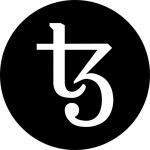
Crypto staking has continued to explode in popularity, as investors can earn more interest (also called “yield” or “rewards”) on their crypto, by staking the most popular Proof of Stake tokens. As you can see below, the interest rates far exceed those of traditional banks.
(If you’re just getting started, see our Guide to Staking Crypto here.)
Most investors want to know which crypto is best for staking, and where can you find the best rates. Our editors rate and review the top tokens and staking platforms weekly, keeping this chart your best source of information on best staking tokens and best staking rates.
| Name | Ticker | Best Rate | Exchange |
| Ethereum | ETH | 9.00% | YouHodler |
| Solana | SOL | 30.00% | Kucoin |
| Cardano | ADA | 8.00% | Nexo |
| Avalanche | AVAX | 13.00% | YouHodler |
| Binance Coin | BNB | 8.00% | Nexo |
| Polkadot | DOT | 21.00% | Kraken |
| Polygon | MATIC | 30.00% | Kucoin |
| Cosmos | ATOM | 21.00% | Stake.fish |
| Algorand | ALGO | 4.08% | Coinbase |
| Tezos | XTZ | 8% | Stake.fish |
| Tron | TRX | 11.00% | Nexo |
| Near Protocol | NEAR | 13.00% | Stake.fish |
| Flow | FLOW | — | Stake.fish |
 Ethereum (ETH)
Ethereum (ETH)
ETH has the potential to become the best crypto for staking. Investors have already locked in $21 billion to the Ethereum 2.0 staking pool. That’s mainly due to the confidence Ethereum inspires: it has a massive ecosystem and widespread adoption.
However, there is still risk involved in staking ETH. Staking ETH today will mean that it is locked until the “Shanghai” upgrade, which is currently scheduled for 2023, but could take longer.
If you have a few ETH in cold storage and don’t have any plans to cash in for a few years, getting into a staking pool might be a good option. After all, this is one crypto we believe in for the long haul.
 Binance Coin (BNB)
Binance Coin (BNB)
Binance is the largest crypto exchange in the world. Its native token, BNB, is an excellent long-term staking option due to its growth potential. It is also incredibly easy to stake using the Binance platform, with a user-friendly interface.
The minimum threshold for delegator staking is extremely low at BNB 0.0001 ($0.048). The BNB Vault on the Binance platform is a good choice for beginners wanting to stake BNB.
 Cardano (ADA)
Cardano (ADA)
Cardano launched in 2015 as a Layer 1 blockchain platform that competes with Ethereum. It shares many features with ETH, including smart contracts, with the added advantage of a PoS algorithm baked in from the beginning.
Over the years, Cardano has grown into one of the top Layer 1 blockchain platforms, with a market cap of $37 billion as of this writing. Granted, it is small compared to BTC and ETH. But Cardano, and its companion token ADA, have a strong community and a forward-thinking development roadmap.
The APR is also quite competitive, and there are frequently no lock-up periods.
 Solana (SOL)
Solana (SOL)
Solana positions itself as a younger, more polished version of Cardano and Ethereum. As a result, the Layer 1 has impressed with a meteoric rise since its launch in April 2020: at this writing, it sits in the top 10 most valuable cryptos with a market cap of nearly $12 billion.
With a unique “Proof of History” consensus mechanism and excellent support for smart contracts, DeFi, and NFTs, Solana has attracted serious interest from developers and institutional investors. Like its competitor Cardano, SOL is a Layer 1 to watch.
This makes it a solid choice for crypto staking, with competitive APRs. In addition, there is no minimum amount of SOL tokens required for delegator staking.
 Algorand (ALGO)
Algorand (ALGO)
Algorand is yet another Layer 1 aiming to become an “Ethereum killer.” It has a solid dev team led by a respected MIT professor, smart contracts, and an improved consensus protocol called Pure Proof of Stake.
Algorand’s native token, ALGO, offers competitive interest rates. And Algorand’s speed and low cost may make it an investment worthy of holding long term.
 Tezos (XTZ)
Tezos (XTZ)
Don’t let its market cap of “only” $1 billion fool you: Tezos has been around for longer than most tokens. But internal struggles and instability hampered its growth after a successful ICO in 2017.
The APR on Tezos’s XTZ token is quite reasonable. In addition, it has an asking price of about $2 as of this writing, and no minimum stake or lock-up period for delegators, making it a possible choice for newcomers to crypto staking.
 Celo (CELO)
Celo (CELO)
Celo has a strong focus on DeFi, smartphones, and sustainability. Its Valora payments app has gained widespread acceptance in mobile remittance. With strong backing from several high-profile investors, Celo is a crypto startup with a potentially exciting future.
With a low percentage of tokens staked, Celo may be an excellent option for crypto staking. It has a relatively high APR at this writing, with no minimum stake and a short lock-up period of 3 days.
 Mina (MINA)
Mina (MINA)
With a total blockchain size of just 22kb, Mina is has of the lightest crypto codebases on the market. (In comparison, the bitcoin blockchain is currently at 350GB and growing.) The focus on minimalism holds promise for faster crypto transactions, an area where the bigger digital assets struggle.
Originally called Coda Protocol after its launch in 2017, Mina was rebranded in 2020 and has a high staking APR.
 Avalanche
Avalanche
Being one of the youngest cryptocurrencies on the list, Avalanche prides itself on being one of the fastest smart contract cryptos in the blockchain industry, as measured by time-to-finality. Avalanche stands at a market cap of approximately $5 billion today, and ranks as one of the top 20 cryptocurrencies.
Avalanche has the potential to be one of the leading smart contract platforms. Given its proof-of-stake model, suite of Defi applications, and big-name backers, the currency might be at the top of the game in due time. The trend of recent private equity tokenization on the Avalanche blockchain can even allow investors to begin private market investments without specialized connections or loads of cash.
 Polkadot
Polkadot
Born with the intention of rivaling contemporaries like Ethereum, Polkadot stands as the 11th cryptocurrency by market cap, with figures as high as $7.6 billion. Its ability to support Parachains (short for ‘Parallel Chains’) is attractive to developers because it allows them to run blockchains alongside one another to speed up transactions.
Owing to these technical innovations, Polkadot can often return high interest rates. Along with a greater risk, there is potentially a lot for investors to gain.
Polkadot’s new on-chain governance model called “Gov2” means more good news for investors. Replacing its council-led governance model, Gov2 is set to build a more open and decentralized structure.
 Polygon
Polygon
Polygon is considered one of the most promising projects in crypto. Launched in 2017 as MATIC, Polkadot is a Layer 2 scaling solution backed by Binance and Coinbase. Its appeal lies in stimulating mass adoption of cryptocurrencies by improving scalability on many blockchains.
Polygon, similar to Polkadot and Avalanche, comes with the capability of creating a multi-chain network. The only difference is that this network of blockchains works on Ethereum, thus including Polygon in Ethereum’s robust security and open ecosystem.
 Cosmos
Cosmos
Cosmos, since its launch in 2017, set out to solve a pressing problem in the industry: the inability of blockchains to interact with one another. Described as “Blockchain 3.0,” Cosmos’s native ATOM token has held up well during the crypto winter of 2022.
Cosmos, besides being a bridge of blockchains, also lets developers quickly create complex blockchains within the Cosmos ecosystem. Owing to this, Cosmos continues to see a steady growth of dapp developers and users.
 Tron
Tron
Tron incentivizes content creators to upload their data to the blockchain by rewarding them in TRX coins. As a result, Tron remains largely decentralized.
Staking TRX comes with a decent APR. And given a token price of less than a dollar, TRX may be worth buying and holding for the long term.
 Near Protocol
Near Protocol
Near’s uniqueness lies in its version of sharding. Dubbed “Nightshade,” the technology improves the overall capacity of blockchain by allowing individual validators to process transactions simultaneously, across multiple sharded chains.
Near boasts a market cap of about $3 billion at this writing. With the possibility of the platform hitting an ATH in the next five years, now could be a good time to buy and stake long-term.
 Flow
Flow
Perhaps Flow’s biggest selling point is its target audience: the mainstream user. It’s the blockchain that runs many top NFT projects, from NBA Top Shot to Bud Light, targeted to the everyday user.
Flow may seem like a smaller Layer 1, but given its respectable APR, its stable of well-known investors, and its traction with everyday users, it could be a worthy long-term investment.
Investor Takeaway
The primary focus of crypto staking is to generate income from assets that would otherwise lie dormant. Instead of looking for crypto assets with the best staking yield, it’s important to balance them with the potential for long-term gains.
Starting from such a “HODL perspective,” you may want to prioritize large-cap, well-established staking coins over obscure cryptocurrencies with double-digit APRs.
For the latest staking strategies, subscribe to our crypto investor newsletter.

